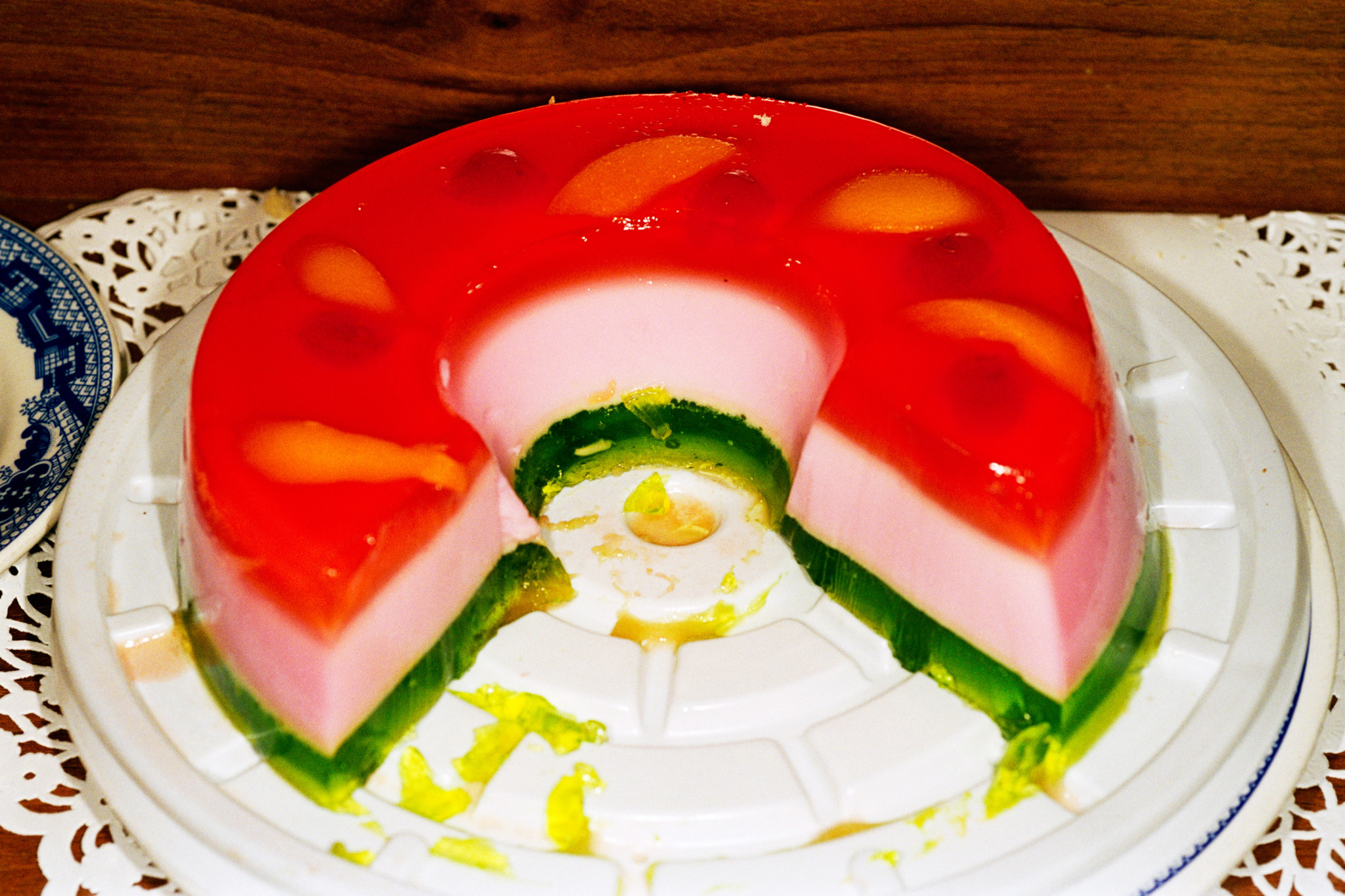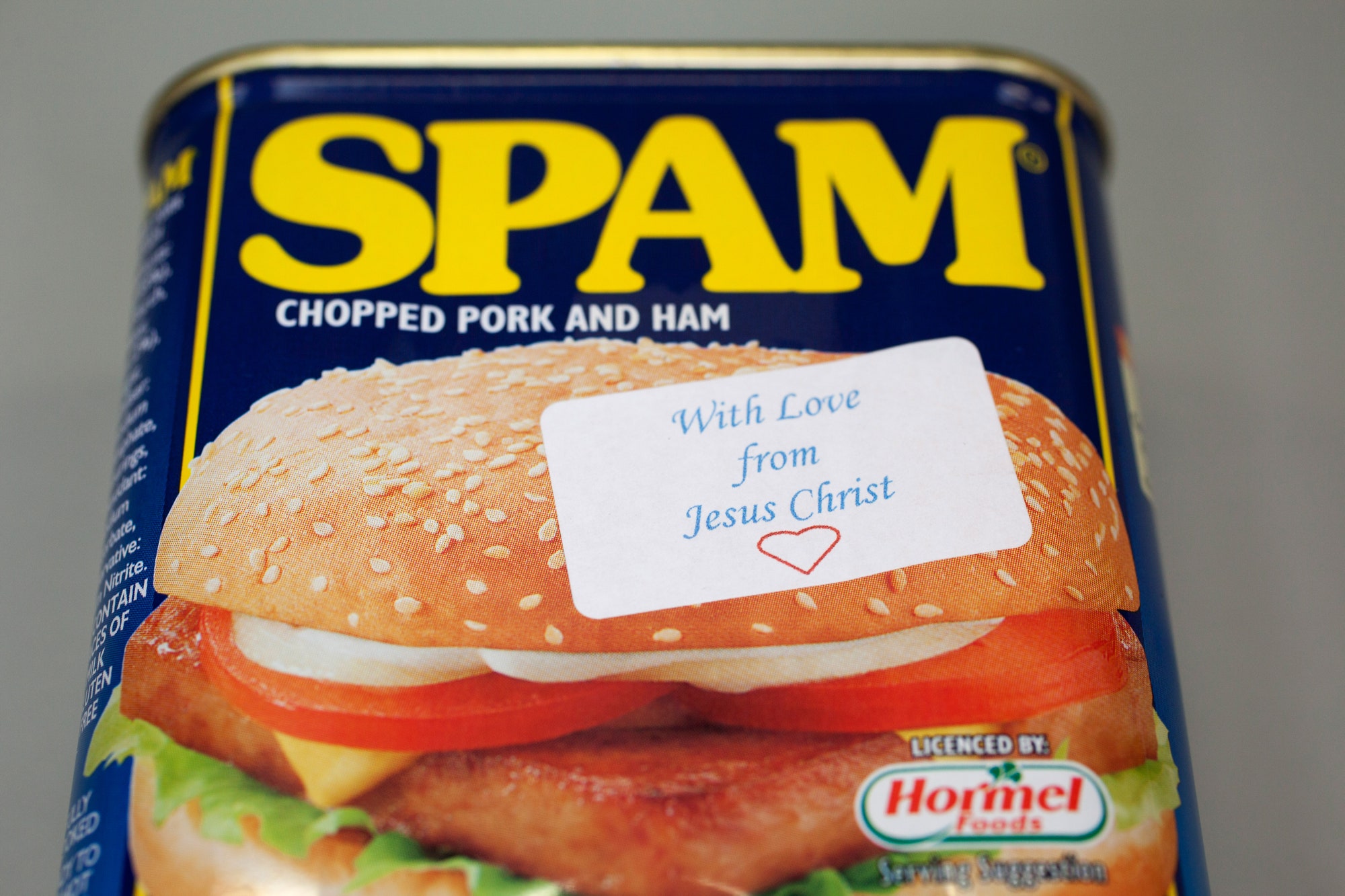
Tijuana, Mexico, 2003
© Martin Parr/Magnum Photos
Martin Parr has been photographing food long before it was a socially accepted norm. Today, a quick snap of one’s artisanally presented gourmet dish is obligatory in some circles. Social media is overwhelmed with carefully cropped, subtly edited images of home-cooked and expensive luxury meals. Parr began photographing food in 1994, during which the world slowly rolled into an era of ‘food porn’, presenting glamourised images of food in adverts, magazines, and other visual media. Savvier individuals formed lucrative internet careers eating and reviewing large amounts of takeaway food on camera to their audience’s delight. Before this edible obsession grew mainstream, however, Parr was honing in on the eating habits of people around the world, using his signature shooting style to present whimsical images of the things we choose to ingest.
Real Food, published in 2016 by Phaidon, brings together a wide-reaching collection of Parr’s food imagery taken throughout his career. The photographs included in the volume were taken on Parr’s many travels around the world, featuring cuisines from Mexico, Japan, the US, and the UK. Favouring junk food as it is simply more ‘interesting’ to photograph, Real Food’s subject matter is depicted with highly saturated, close-up, hard-flashed shots. A rubbery ring cake in Mexico is pictured with a hunk taken out of its middle, its gelatinous offcuts bleeding onto the dish’s grooves. Two plain slices of white bread are captured sitting on a gingham tablecloth, and a can of chopped pork and ham is marked by a label stating, ‘with love from Jesus Christ’. Under Parr’s harsh glare, these foods appear inedible, seeming more like a wax display than sustenance. With this unreal quality, Parr uncovers a comical side to our culinary preferences. The publication is brimming with subtle, non-judgmental, jibes which allow us to find humour in our own dietary desires.

Food Bank, Wolverhampton. Black Country. England, Great Britain, 2012
© Martin Parr/Magnum Photos
Parr photographs food through a macro lens, allowing for ultra close-up images. In doing so, he removes unnecessary subsidiary details, ignoring any people, scenery, or surrounding architecture. The few hints of human interaction left within an image are a disembodied hand grasping a bucket of chicken nuggets, or a torso set behind an overflowing milkshake. The book doesn’t include any captions, and all locations are conveniently left to an index at the end. Parr purposefully removes the food from its contextual environment, rejecting singular experiences and allowing the viewer to ascribe their own associations with his photographs. In this sense, Parr’s food acts as a social binder.
Indeed, food is an achingly personal entity. We turn to it for comfort, celebration, or distraction. It is tied to our emotions, rituals, and customs. Parr’s imagery of food manipulates our obsession into a light-hearted exploration of different tastes and traditions.
(By Eleanor Lerman)
